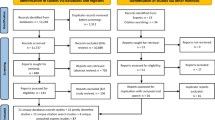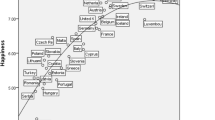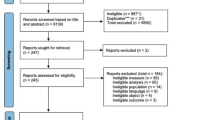Abstract
Does personal wealth cause individuals to select into public office? This study exploits the 1805 and 1807 Georgia land lotteries to investigate the hypothesis that wealth increases political power. Most eligible males participated in the lotteries and more than one-in-ten participants won a land prize worth over half of median property wealth. I find no evidence that lottery wealth increases the likelihood of officeholding or running for office, and argue that those null findings are informative because the estimates are not practically different from zero. The absence of a treatment effect implies that commonly observed cross-sectional correlations between personal wealth and officeholding are likely explained by selection effects.

Similar content being viewed by others
Notes
The linear model used to obtain the estimate assumes that distance of the land to the city is uncorrelated with unobserved individual-level predictors of political labor supply, such as the opportunity costs associated with holding office.
The six later Georgia lotteries were held in 1820, 1821, 1827, 1832, 1832 (“Gold Lottery”), and 1833 (“Fractions Lottery”).
The authors use a sample of 1832 lottery participants linked to the full-count 1850 Census to investigate the effects of lottery prize values on the long-run wealth distribution of lottery winners. Using the same linked sample, Bleakley and Ferrie (2016) finds no evidence of a treatment effect on the wealth, literacy, or occupational standing of lottery winners or their descendants.
Relatedly, Milyo and Groseclose (1999) find that incumbent wealth is orthogonal to electoral success in the 1992 House elections.
Table SM-1 in the Supplementary Material (SM) provides information on the estimated lot value per county and a description of how the mean land prize values are calculated.
The legislature typically met more than once. For example, in 1805 the House and Senate each met about 30 times.
The match probability averages are close to zero because the model is trained on a different domain; i.e., linking 1807 participants to officeholder records. I drop the prediction threshold to 25% in order to compensate for lower average match probabilities.
Figure SM-1 maps the original counties created by the 1805 lottery, and Fig. SM-2 provides a timeline of 1805 and 1807 lottery events.
Table SM-3 provides further details on lottery eligibility. Participants were required to take an oath when “doubt exist in the minds of the said justices” regarding the veracity of participants’ eligibility. The legislature criminalized making false statements concerning eligibility in the land lotteries. The law specifies that if found guilty in a jury trial, half of the defendant’s land went to the informer and the other half is reverted to the state, to be auctioned as land fractions.
The 1805 calculation was made by taking the proportion of adult male participants over the total white male population aged 16 and over in the 1800 Census (Table SM-4). The 1807 calculation subtracts the number of adult male winners in the 1805 lottery from the numerator.
Lottery winners had 12 months following the drawing to claim their prize under law; however, the legislature extended the deadline for claiming prizes on an annual basis until 1815. If lottery winners did not claim their land prior to the deadline, then the lots reverted to the state and sold in a public auction.
The cross-validated mean squared error on the training set is less than 3%. Table SM-5 provides information on the record link ensemble’s candidate learners, weights, and error estimates.
I lower the prediction threshold to 12.5% to adjust for candidate match probabilities that average near zero (Table SM-6).
Access to the full-count data is granted by agreement between UC Berkeley, and the Minnesota Population Center (Ruggles et al. 2015). The Minnesota Population Center has collected digitized census data for 1790–1930 microdata collection with contributions from Ancestry.com and FamilySearch.
The significance level for the Bonferroni correction is \(\alpha = 0.05/33 = 0.001\).
The calculation uses a sample of adult male heads of household who were born in Georgia and were living in Georgia at the time of the 1850 Census. The statewide slave wealth Gini coefficient in 1820 is 0.78 (Table SM-11) and the coefficient for statewide real estate wealth in 1850 is 0.66 (Table SM-12), both indicating substantial wealth inequality.
References
American Antiquarian Society. (2007). Lampi Collection of American Electoral Returns, 1788-1825. Retrieved June 6, 2016 from the Tufts Digital Library.
Archives, G. (1978). Georgia official and statistical register 1977–1978. Morrow: Georgia Archives.
Archives, G. (1990). Georgia official and statistical register 1989–1990. Morrow: Georgia Archives.
Besley, T., & Coate, S. (1997). An economic model of representative democracy. The Quarterly Journal of Economics, 112(1), 85–114.
Bleakley, H., & Ferrie, J. (2013). Up from poverty? The 1832 Cherokee Land Lottery and the long-run distribution of wealth.
Bleakley, H., & Ferrie, J. (2016). Shocking behavior: Random wealth in antebellum Georgia and human capital across generations. The Quarterly Journal of Economics, 131(3), 1455–1495.
Cadle, F. W. (1991). Georgia land surveying history and law. Athens: University of Georgia Press.
Clayton, A. S., & Adams, T. W. (1812). A compilation of the laws of the state of Georgia: Passed by the legislature since the political year 1800, to the year 1810, inclusive. Augusta: Adams & Duyckinck.
Corvalan, A., Querubin, P., & Vicente, S. (in press). The political class and redistributive policies. Journal of the European Economic Association.
Coulter, E. M. (1960). Georgia: A short history. Chapel Hill: University of North Carolina Press.
Davis, R. S. (1981). Research in Georgia. Greenville: Southern Historical Press.
Doherty, D., Gerber, A. S., & Green, D. P. (2006). Personal income and attitudes toward redistribution: A study of lottery winners. Political Psychology, 27(3), 441–458.
Eggers, A. C., & Hainmueller, J. (2009). MPs for sale? Returns to office in postwar British politics. American Political Science Review, 103(4), 513–533.
Fiorina, M. P. (1994). Divided government in the American States: A byproduct of legislative professionalism? American Political Science Review, 88(2), 304–316.
Fiorina, M. P. (1999). Further evidence of the partisan consequences of legislative professionalism. American Journal of Political Science, 43(3), 974–977.
Graham, P. K. (2004). 1805 Georgia Land Lottery fortunate drawers and grantees. Decatur: Genealogy Company.
Graham, P. K. (2011). 1807 Georgia Land Lottery fortunate drawers and grantees. Decatur: Genealogy Company.
Groseclose, T., & Krehbiel, K. (1994). Golden parachutes, rubber checks, and strategic retirements from the 102d House. American Journal of Political Science, 38(1), 75–99.
Hacker, J. D. (2010). Decennial life tables for the white population of the United States, 1790–1900. Historical Methods, 43(2), 45–79.
Haines, M. R. (2010). The inter-university consortium for political and social research. Historical, demographic, economic, and social data: The United States, 1790–2002. Ann Arbor, MI: Inter-university Consortium for Political and Social Research [distributor], 2010-05-21. https://doi.org/10.3886/ICPSR02896.v3.
Hall, R. L., & Van Houweling, R. P. (1995). Avarice and ambition in Congress: Representatives’ decisions to run or retire from the U.S. House. American Political Science Review, 89(1), 121–136.
Helper, H. R. (1860). The impending crisis of the South: How to meet it. New York: A.B. Burdick.
Inter-University Consortium for Political and Social Research. (1995). Candidate name and constituency totals, 1788–1990. Ann Arbor, MI: Inter-university Consortium for Political and Social Research [distributor], 1995-06-05. https://doi.org/10.3886/ICPSR00002.v5.
Meyers, C. C., & Williams, D. (2012). Georgia: A brief history. Macon: Mercer University Press.
Milyo, J., & Groseclose, T. (1999). The electoral effects of incumbent wealth. The Journal of Law and Economics, 42(2), 699–722.
Osborne, M. J., & Slivinski, A. (1996). A model of political competition with citizen-candidates. The Quarterly Journal of Economics, 111(1), 65–96.
Querubin, P., & Snyder, J. M, Jr. (2013). The control of politicians in normal times and times of crisis: Wealth accumulation by U.S. congressmen, 1850–1880. Quarterly Journal of Political Science, 8(4), 409–450.
Rossi, M. A. (2014). The impact of individual wealth on posterior political power. Journal of Economic Behavior & Organization, 106(C), 469–480.
Ruggles, S., Genadek, K., Goeken, R., Grover, J., & Sobek, M. (2015). Integrated public use microdata series: Version 6.0 [database]. Retrieved June 6, 2016 from the North Atlantic Population Project.
Simons, A. M. (1912). Social forces in American history. New York: Macmillan.
Truex, R. (2014). The returns to office in a rubber stamp parliament. American Political Science Review, 108(2), 235–251.
Weiman, D. F. (1991). Peopling the land by lottery? The market in public lands and the regional differentiation of territory on the Georgia frontier. The Journal of Economic History, 51(4), 835–860.
Winters, J. A., & Page, B. I. (2009). Oligarchy in the United States? Perspectives on Politics, 7(4), 731–751.
Acknowledgements
I thank Eric Dickson, Sean Gailmard, Pete Leeson, Eric Schickler, and William F. Shughart II for helpful comments. This material is based upon work supported by the National Science Foundation Graduate Research Fellowship under Grant No. DGE 1106400. Any opinion, findings, and conclusions or recommendations expressed in this material are those of the author and do not necessarily reflect the views of the National Science Foundation.
Author information
Authors and Affiliations
Corresponding author
Electronic supplementary material
Below is the link to the electronic supplementary material.
Rights and permissions
About this article
Cite this article
Poulos, J. Land lotteries, long-term wealth, and political selection. Public Choice 178, 217–230 (2019). https://doi.org/10.1007/s11127-018-00625-9
Received:
Accepted:
Published:
Issue Date:
DOI: https://doi.org/10.1007/s11127-018-00625-9




